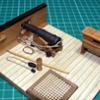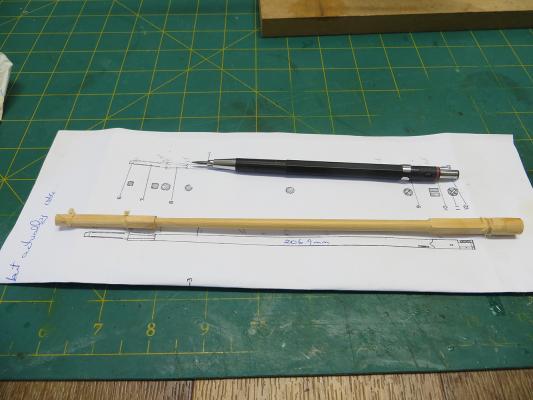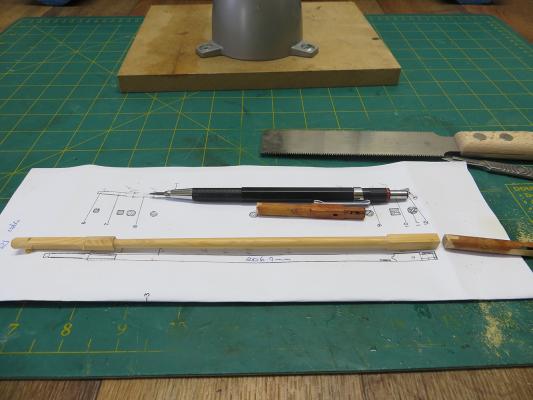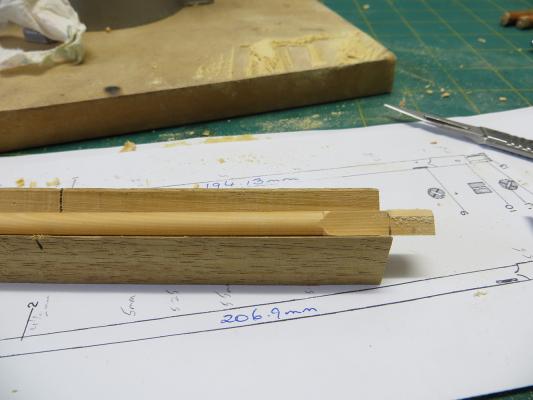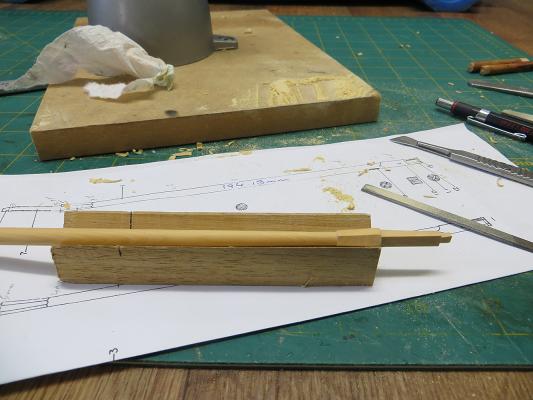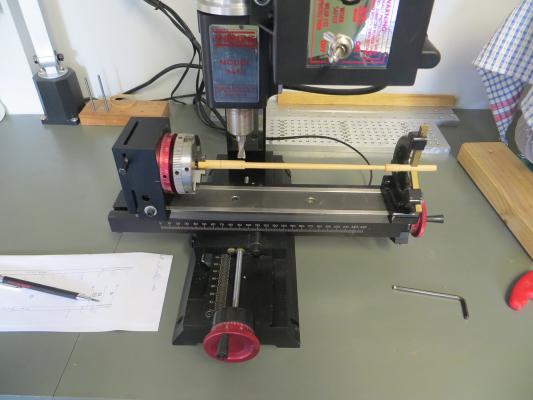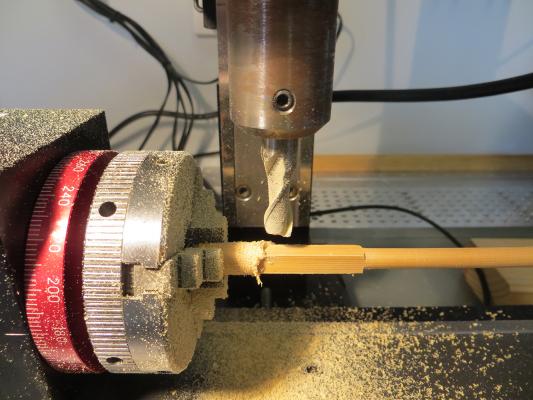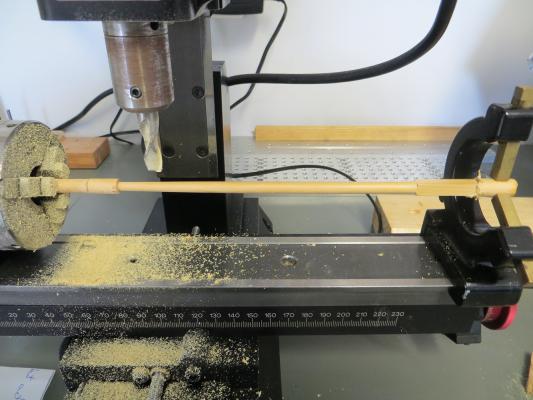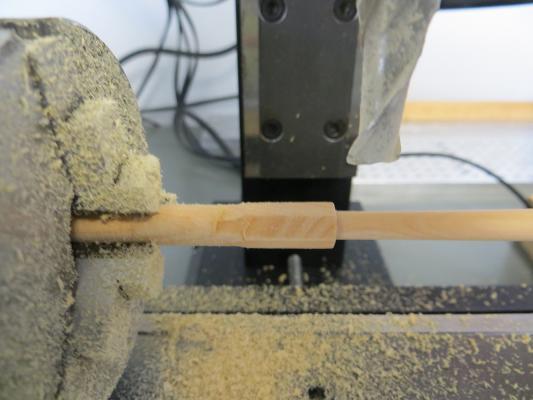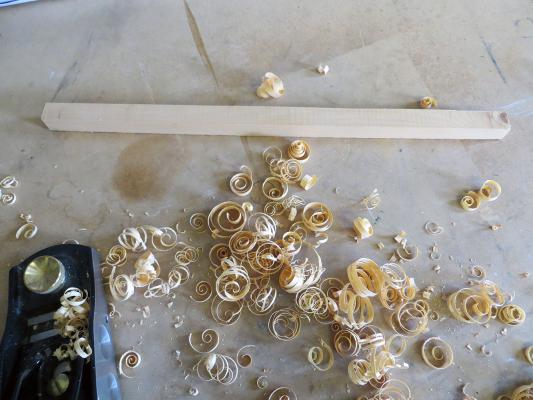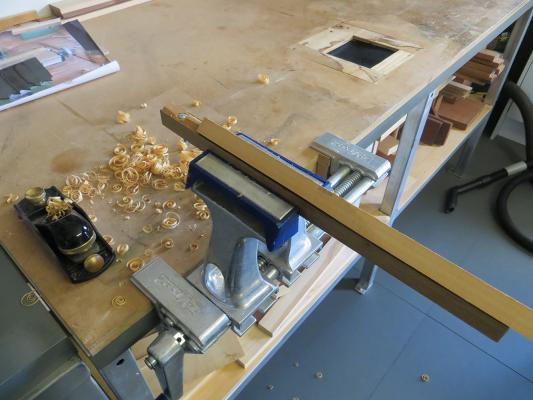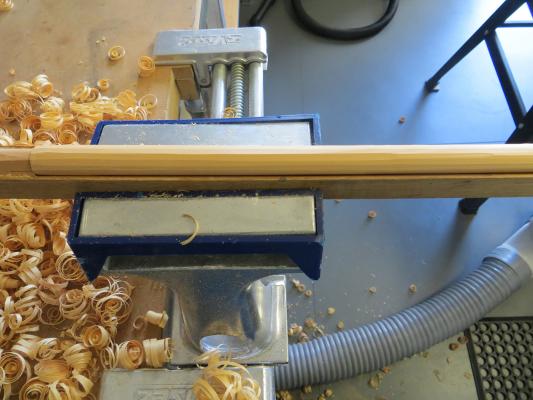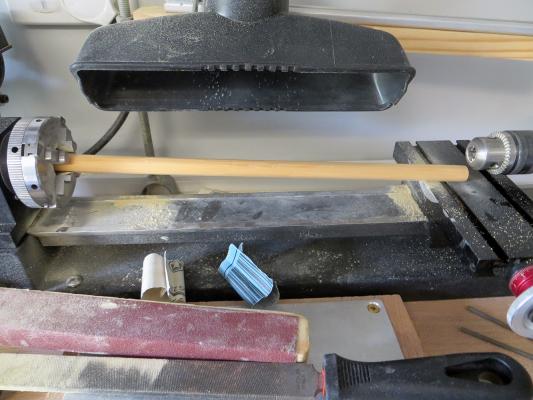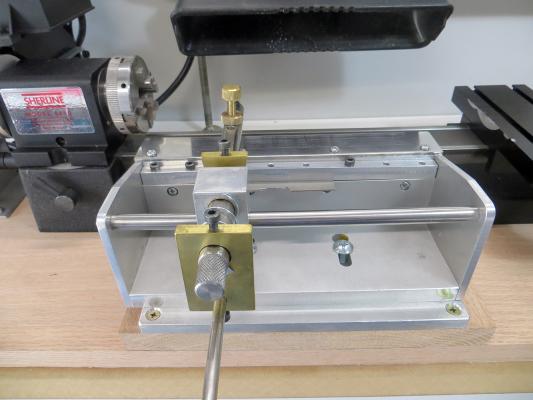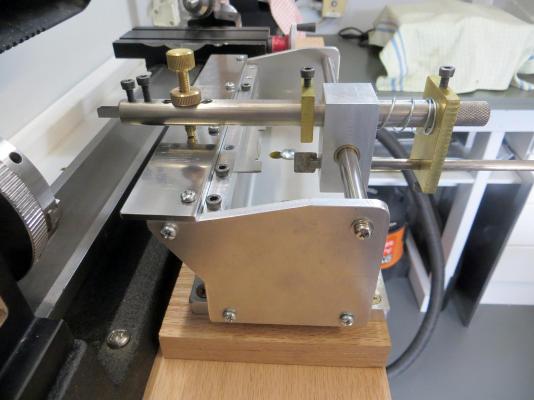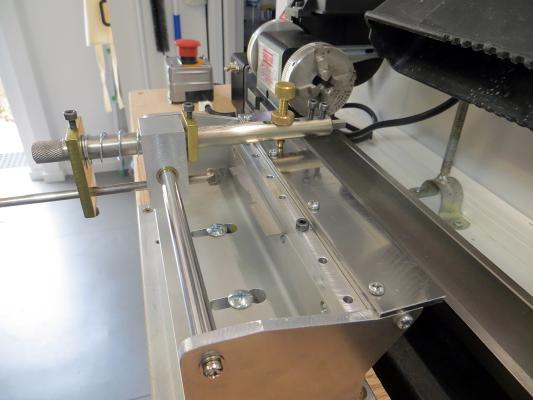-
Posts
5,938 -
Joined
-
Last visited
Content Type
Profiles
Forums
Gallery
Events
Everything posted by BANYAN
-
Thanks for looking in Dave and Ron - it took me a while to build up the funds for those 'little' toys. However, as shown in ample logs here, and by previous generations of modellers - you don't need the toys to produce great results - it just makes it a little easier (once you work out the workflow). cheers Pat
- 517 replies
-
- Endeavour
- Artesania Latina
-
(and 1 more)
Tagged with:
-
Hi Graham and a belated welcome to the Endeavour build club The simple answer as to redoing the planks is to ask you a question: can you live with them? You are bound to have some observers comment on it, but the final decisions re aesthetics is up to you. As some form of guidance, I regret some of the minor 'boo-boos' from the earlier stages of my build that I now wish I had redone . A simple way to align your planking is to follow the general rules for spiling/planking (see articles on this site) with one part of the process being marking out the planking lines on the first layer of planking. Use a card strip or a flexible plastic strip on which to mark out your plank widths on the strip. At this stage of my build (and I am still learning a lot) I was not spiling by the rules as such, but instead I started by determining the wale positions, laid them, then planked up and down from that by letting the planks fall naturally where possible (dry fit) and fill the gaps etc etc with stealers / drop planks, and nibbing away any overlap before gluing in place. This means that at the bow etc, it is not a constant 5mm separation (if I recall, these are 5mm strips in this kit), so I was dry fitting the plank on one side, and after establishing where the bottom edge would fall, mark that on the hull and transfer that distance to the other side of the stem and stern whereas, in the middle it was generally an even 5mm spacing. If spiling by the rules, you mark out the planking belts, determine the number of planks and divide the space at each station line by the number of planks to establish the width of the plank at that point. This would allow you to mark out the planking lines before starting. Place the strip on the stem (one side at a time from a good reference point that you can establish - perhaps the top of the wales or such, and having ensured these are level by eye during dry fitting, then use the marks on the ticker strip to transfer the locations of each joint onto your hull. Do this in several vertical locations along the hull and when applying your planks make sure they align with the tick marks - the results should be level planking. good luck Pat
- 10 replies
-
- endeavour
- artesania latina
-
(and 1 more)
Tagged with:
-
That's an interesting arrangement you have proposed Sharpie, and something like that may very well have worked. Can you lean on any experience from how the Egyptians did it? Also, was it definitely rope or could it have been leather, which if wet can be tensioned considerably when dry? She is coming along nicely and an interesting log to boot cheers Pat
-
She's a true little beauty with her 'dress on' mate; those little schooners/luggers certainly had nice lines. cheers Pat
- 745 replies
-
- francis pritt
- mission ship
-
(and 1 more)
Tagged with:
-
I need a new dictionary - I have run out of superlatives for the quality of work and detail of this beautiful model. cheers Pat
- 1,215 replies
-
- sloop
- kingfisher
-
(and 1 more)
Tagged with:
-
Thanks for looking in Mark, Tougharts and all; and for the comments Brian, Greg, John and Mike. Once you get the hang of the workflow it goes smoothly enough. The most challenging bit is tapering the hexagonal piece which can easily go so wrong . cheers Pat
- 517 replies
-
- Endeavour
- Artesania Latina
-
(and 1 more)
Tagged with:
-
Ok folks, here is the final instalment for today. Having completed the mill work, the remainder is done by hand with a lot of measuring, checking, rechecking - and did I say rechecking . The next photo shows one of my new topmasts (main) with a couple of the offcuts ftom my old topmasts, which shows just how out of scale they were. Some of the shaping I do in a small 'V' block I have now completed what I can for shaping as shown below and the next step will be milling in the slots for the sheathes etc. Thanks for looking in - two down, mizzen topmast next, then the 2 poles for the fore and main. cheers Pat
- 517 replies
-
- Endeavour
- Artesania Latina
-
(and 1 more)
Tagged with:
-
Hi again, The following photos show the milling stage (instalment 2). The picture shows my setup and the various steps involved to mill the flats for the square base piece, the flats for the octagon (which is hand tapered later). I think the shots are self-explanatory without further text. Click on the thumbnails for a larger photo/better look. cheers Pat
- 517 replies
-
- Endeavour
- Artesania Latina
-
(and 1 more)
Tagged with:
-
Hi folks, the rebuilding process (for the topmasts and poles) has begun. I remembered to take some photos this time and attempted to show the process I use with some hand tools, a lathe and mill. This can all be done by hand as is evidenced in many fine build logs but I find this works for me. This will be done in 4 instalments with the last being the cutting of the sheave holes which will come later (when all topmasts and poles have been produced). I only managed to salvage one new topmast as either the old masts were too thin to apply the square or hexagon shape, or the sheath holes were in the wrong place. It didn't take too long to get back into the swing of things, but at one mast component a day, it will take a wile - so grab a cuppa! (or something stronger if that floats your boat ) I first cut my stock into square dowel. This is then placed in my shooting board ( a 'V' strip of hardwood with a stop at one end) and the stock is roughly rounded using a plane. I then chuck it into my lathe with a free-spinning tail stock chuck and three jaw chuck. I ensure there is ample waste at each end so that I can tightly chuck the ends without having to worry about damaging the stock or coming to close to the end of piece with the turning gouge, files and sandpaper blocks I use to round the stock and turn it to size. This is done a little at a time with constant checking of size etc against the required dimensions.\ Once finished I transfer the work to an indexing tool under the mill which I will show in the next instalment. Cheers Pat
- 517 replies
-
- Endeavour
- Artesania Latina
-
(and 1 more)
Tagged with:
-
Hey Janos, I'm envious of those gorgeous figureheads you make - let's just call it even cheers Pat
- 517 replies
-
- Endeavour
- Artesania Latina
-
(and 1 more)
Tagged with:
-
The attention and detail you are lavishing on her should result in a very nice planking Mark. Still hangin' there cheers Pat
-
Mike did you see the bit at the bottom about entering fractions of an inch for conversion? A bit clumsy but it seems to work? cheers
-
Mike, have a look at this one - does exactly what you asked I think? http://jbwid.com/scalcalc.htm cheers pat
-
Well, I have bit the bullet and stripped back the top masts and poles to be 'reengineered' this weekend. Hopefully get it right this time. cheers Pat
- 517 replies
-
- Endeavour
- Artesania Latina
-
(and 1 more)
Tagged with:
-
Danny, you could install / use a free-standing de-humidifier, but it is a more expensive solution. You can get mini-dehumidifiers for under $100 but a medium will be over $100 - if it works though might be worth it? You would have to try and seal the workshop a bit though I would think? cheers Pat
-
Danny you are a rigging master - very nice - a very high quality of finish to your rigging! cheers Pat
-
Greg, Danny has explained the process far more eloquently than me That is basically the process I (have stumbled on) am using; as I said horses for courses. cheers Pat
- 517 replies
-
- Endeavour
- Artesania Latina
-
(and 1 more)
Tagged with:
-
Nice pick up Steve, I wish I had been as diligent Nice work on the shroud whippings - far better than mine. cheers Pat
-
HI Dave, many thanks for that but I have the dimensions now that I had to recalculate it all - but I do appreciate the offer. cheers Pat
- 517 replies
-
- Endeavour
- Artesania Latina
-
(and 1 more)
Tagged with:
-
Thanks for looking in Keith, Steve and Mike. Sorry Keith - my engineering man is tied up for a while (not with my work either). I still need some adjustments on this as we get to know it better but it is a "nice" tool. Appreciate this feedback re scale errors folks - nice pick up Steve. I made the topmasts and poles some time back in preparation for rigging so no matter what, I would have had to redo them anyway - practice makes perfect they say. I will have to take down the topmast shrouds, but they will be reusable as they will not be shorter I have to find some positives. You can bet your bottom dollar I will not be taking the published scales at face value anymore cheers Pat
- 517 replies
-
- Endeavour
- Artesania Latina
-
(and 1 more)
Tagged with:
-
Hi Mike - Very displeased but a valuable lesson learned. You are absolutely right on both counts mate; the printed scale is incorrect - and I did use these and scaled accordingly. I had a discussion with the author this afternoon - he was not aware of this himself and appreciated the feedback. It appears the publishers have rescaled his drawings (which were all 1/4":1') to fit the page but did not provide the correctly adjusted text for the scale. I thought they looked a little too tall. This also explains why the mast caps weren't quite right - I thought it was my joinery. At least I can reuse the topmasts to sand them down to the smaller sizes - using the AL kit 1:1 drawing at least the lower masts and the mizzen are correct (but I will check) . Surprising this has not been reported before. How did you pick up on by by the way? cheers Pat
- 517 replies
-
- Endeavour
- Artesania Latina
-
(and 1 more)
Tagged with:
-
Thanks Mike, I wasn't aware of this and I will be very displeased () if I have this wrong - I will double check tonight) cheers Pat
- 517 replies
-
- Endeavour
- Artesania Latina
-
(and 1 more)
Tagged with:
-
Hi Russ, John, Slog, Greg and Keith; many thanks for looking in and your interest in my build. Greg, I'll PM separately; thanks for the offer of the article. WRT masts, the way you suggest is the way most people do it. To be totally honest, I made all the bits and then experimented to establish the best way for aligning the deadeyes/doing the shrouds. I then forgot to remove them to do the upper work and I have progressed with building the masts on the model. This has actually been beneficial in some respects but it is probably horses for courses as to your approach. I am lucky in that I can adjust my work table up and down and I have a home built working rest for working on rigging that makes the task easier to do on the model. I'll post a picky of it next update. Keith the duplicator is a self design with some engineering work by a mutual acquaintance. You would need to talk with him cheers Pat
- 517 replies
-
- Endeavour
- Artesania Latina
-
(and 1 more)
Tagged with:
-
Another update, but to the workshop more so than Endeavour. A fellow club member has assisted with some of the engineering which has helped greatly. The duplicator (for my Sherline lathe) is an adaption of a design by David Antscherl in his TFFM series. I have yet to try this in fully-fledged anger, but the trials and testing is very pleasing. cheers Pat
- 517 replies
-
- Endeavour
- Artesania Latina
-
(and 1 more)
Tagged with:
About us
Modelshipworld - Advancing Ship Modeling through Research
SSL Secured
Your security is important for us so this Website is SSL-Secured
NRG Mailing Address
Nautical Research Guild
237 South Lincoln Street
Westmont IL, 60559-1917
Model Ship World ® and the MSW logo are Registered Trademarks, and belong to the Nautical Research Guild (United States Patent and Trademark Office: No. 6,929,264 & No. 6,929,274, registered Dec. 20, 2022)
Helpful Links
About the NRG
If you enjoy building ship models that are historically accurate as well as beautiful, then The Nautical Research Guild (NRG) is just right for you.
The Guild is a non-profit educational organization whose mission is to “Advance Ship Modeling Through Research”. We provide support to our members in their efforts to raise the quality of their model ships.
The Nautical Research Guild has published our world-renowned quarterly magazine, The Nautical Research Journal, since 1955. The pages of the Journal are full of articles by accomplished ship modelers who show you how they create those exquisite details on their models, and by maritime historians who show you the correct details to build. The Journal is available in both print and digital editions. Go to the NRG web site (www.thenrg.org) to download a complimentary digital copy of the Journal. The NRG also publishes plan sets, books and compilations of back issues of the Journal and the former Ships in Scale and Model Ship Builder magazines.


